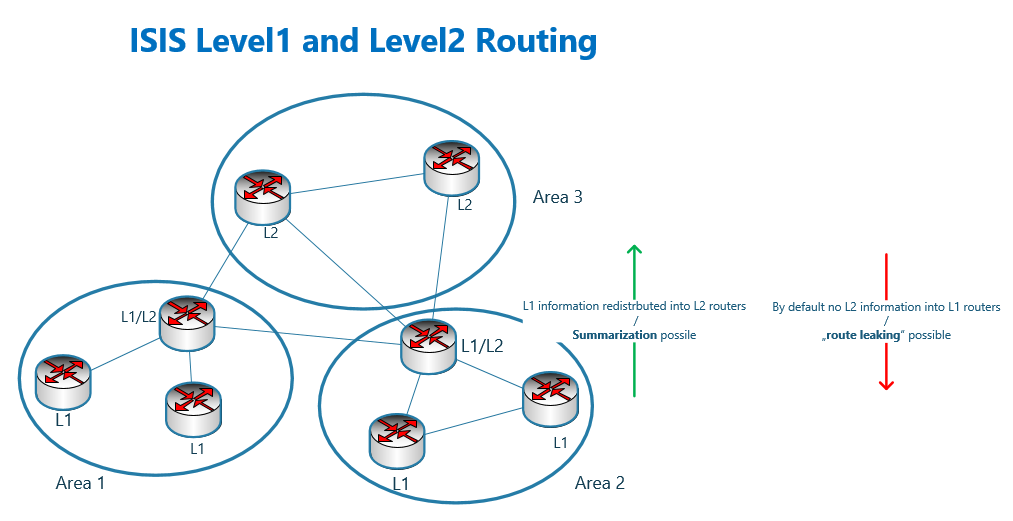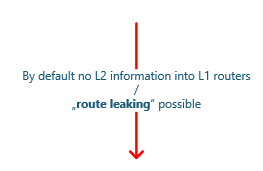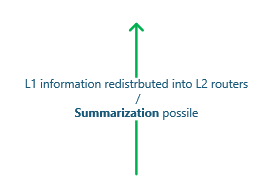ISIS Level 1 and Level 2 Routing knowledge is critical to understand how actually routing works in this protocol. This is the topic of this section.
ISIS Level 1 and Level 2 Routing
As mentioned in the previous section, there are three types of routers in ISIS: L1, L2 and L1/L2.
L1 routers are only aware of the internal topology of the Area and have no knowledge of the topology outside the Area.
L2 routers are aware of the complete topology of the network and are able to handle the routing between areas.
L1/L2 routers are responsible for transferring database information of L1 routers into L2 routers. L1/L2 routers play the same role of ABR routers in OSPF but there is a fundamental difference with ABR.
L1/L2 routers do not transmit any information from the backbone path or L2 routers to L1 internal routers, and therefore L1 internal routers do not have any information from outside the area.
In fact, L1 routers in ISIS are equivalent to routers in totally stubby area in OSPF and in order to route traffic out of the area, they must send traffic to L1/L2 router inside the same area.
what is ATT attribute in ISIS?
The question is how the internal L1 routers of the Area know which router is L1/L2 router?
The L1/L2 router informs other routers of its status by activating a bit called ATT attribute in the LSPs sent into the area. ATT means that the router play the role of L1/L2 router in the Area.
what is Route Leaking in ISIS?
As explained, by default, there is no information distributed from L2 routers into L1 routers.
But there is mechanism to transfer all or part of L2 database information to L1 routers if needed. Usually, this mechanism is used when we intend to perform traffic engineering. This mechanism is called “route leaking“, which will be discussed in the subsequent sections.
what is summarization in ISIS?
Another point is that by default all L1 LSPs are forwarded to L2 routers.
But like OSPF, there is also the possibility of summarize LSPs when transmitting from L1 routers to L2 routers. This mechanism is called summarization.
In this case, backbone routers or L2 routers will only have a summary of the information of the areas. Summarization is also discussed in the next sections.


